Plasma interactions
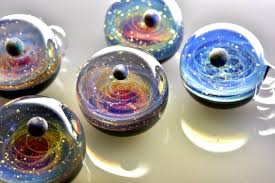 Two or more Plasmas can interact if they are of compatible strength; if their energy gap is too large, they do not interact. They are too different; they don’t ‘see’ each other.
Two or more Plasmas can interact if they are of compatible strength; if their energy gap is too large, they do not interact. They are too different; they don’t ‘see’ each other.
The fields that emerge out of the plasma poles interact with the fields of other plasmas. Attracting fields give gravitational forces; repelling fields are magnetic forces.
When these two forces are in balance, a new plasma is created. It can be compared to a transparent sphere (see picture) that contains a whole universe.
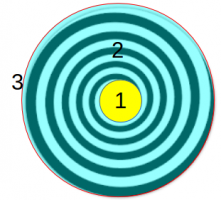 Each of these plasma balls have a centre that is called Principle (1), it is the mother or the soul. Around it we find the Transition (2) which covers the distance between the centre and the periphery. And the periphery of the ball constitutes the Matter (3).
Each of these plasma balls have a centre that is called Principle (1), it is the mother or the soul. Around it we find the Transition (2) which covers the distance between the centre and the periphery. And the periphery of the ball constitutes the Matter (3).
The forces emerge at the centre, pass through the transition to become matter at the periphery. In the example of the egg: the yolk is the Principal, the white the Transition and the shell the Matter.
The plasma balls come in two different sizes:
- The tall ones (10-15m): Mom-proton and dad-neutron
- The little ones (10-18m): Children-electrons
A proton and an electron behave like a mother with her child – the child is always in free motion but at the same time remains in the mother’s gravitational field.
The combination or interaction of different Plasma creates the sequences from the smallest things to the largest: electron > atom > molecule > cell > organ > living being > planet > solar system > galaxy > universe > omniverse.
But it also creates all the kingdoms or dimensions of the Universe that we know. These kingdoms are formed in 6 steps:
- The interaction of 2+ magnetic fields creates a Plasma
- The interaction of 2+ plasmas creates an atom = the domain of physics
- The interaction of atoms creates a molecule = the domain of chemistry
- The interaction of molecules can create a cell = the domain of biology
- The interaction of cells can create an emotion = the domain of psychology
- The interaction of emotion with the physical plane creates the soul = the domain of spirituality
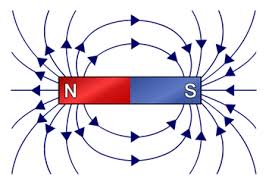 The interactions of Plasma by their Magrav fields are relatively easy to understand when we look at a magnet:
The interactions of Plasma by their Magrav fields are relatively easy to understand when we look at a magnet:
Each magnet has an N pole and an S pole. The magnetic rays leave the N pole and the gravitational rays enter through the S pole.
If we place opposite poles opposite each other (N-S, S-N) the magnets will attract each other; it is the gravitational force. If we place equal poles next to each other (N-N, S-S), the magnets will repel each other; it is the magnetic force.
 Watch this video. By placing three magnets on the table, we dictate the interaction of the fields and they will almost immediately find their position in relation to each other. If we bring a fourth magnet closer, all the magnets will interact – that is, each of the magnets will move to find its balance with the others. In the example of the magnets on the table, this process is quickly completed and the magnets will stay in place until another one moves between them… and all the others will naturally reposition themselves to restore the said balance. The distance between magnets is determined by their respective magnetic forces.
Watch this video. By placing three magnets on the table, we dictate the interaction of the fields and they will almost immediately find their position in relation to each other. If we bring a fourth magnet closer, all the magnets will interact – that is, each of the magnets will move to find its balance with the others. In the example of the magnets on the table, this process is quickly completed and the magnets will stay in place until another one moves between them… and all the others will naturally reposition themselves to restore the said balance. The distance between magnets is determined by their respective magnetic forces.
On the other hand, in the field of plasma or living organisms, interaction and positioning are dynamic, which means that the movement never stops. A good example is our solar system. The planets are in a perpetual motion to restore their equilibrium at every moment.
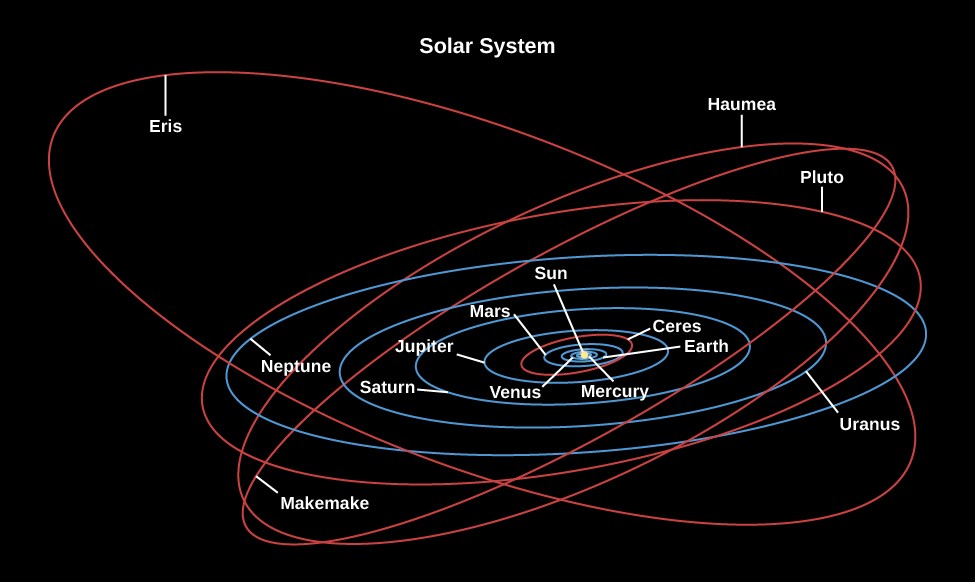
The following image shows all the interactions that occur when 2+ plasmas meet:
1. Fields leaving the N poles enter the S pole of the other and into their own S pole. This creates an attraction.
2. At the same time, the fields of the two poles N and two poles S repel each other.
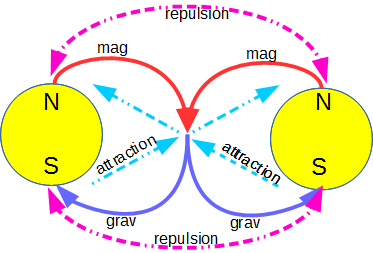 The two interactions of attraction and repulsion are responsible for maintaining the distance between the two plasmas; the distance being determined by the force of the attraction minus the force of the repulsion. It is this distance that allows the two plasmas to move freely because they are in a relative distance that will be maintained at different places.
The two interactions of attraction and repulsion are responsible for maintaining the distance between the two plasmas; the distance being determined by the force of the attraction minus the force of the repulsion. It is this distance that allows the two plasmas to move freely because they are in a relative distance that will be maintained at different places.
With magnets it is clear that the fields interact although they are not in direct physical contact. It is important to note that in the real world, there are not just two or four elements that interact, but all things and all molecules of all things and all atoms of all molecules of all things and all plasmas of all parts of all atoms of all molecules of all things…everything interacts!
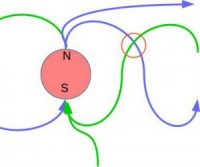 We see on the image that magnetic fields leave the N pole; from the point of intersection (red circle), they move towards the S pole; at that moment they are called gravitational. The notions of gravitational or magnetic are relative; it is our position as the observer that determines whether a field is called magnetic or gravitational.
We see on the image that magnetic fields leave the N pole; from the point of intersection (red circle), they move towards the S pole; at that moment they are called gravitational. The notions of gravitational or magnetic are relative; it is our position as the observer that determines whether a field is called magnetic or gravitational.
On the Plasma level, there is always a multitude of fields that interact and the mode of interaction determines the quality of the field. For example, if one input (N) interacts with another input (N), a magnetic field results; if two outputs interact – also a magnetic field; if the two are different (N,S) a gravitational field results.

Plasma interactions
The main characteristics of plasma interactions are as follows:
- The stronger always feeds the weaker to bring him to his level; this creates a balance between the two.
- You take from the environment what you need; that means that the fields of the environment are stronger.
- You give the environment what you don’t need; your fields are stronger than those of the environment.